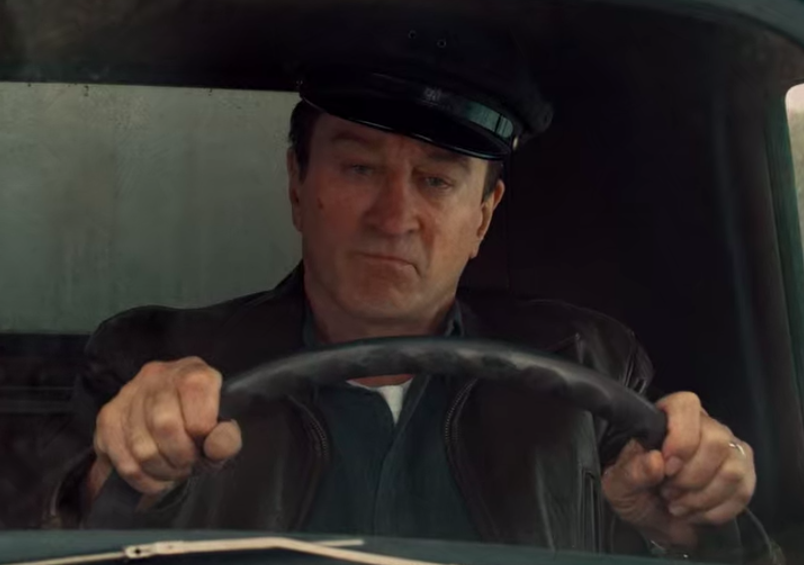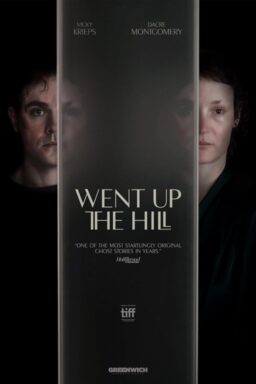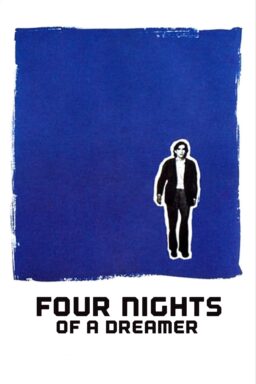The first time we see Robert De Niro de-aged in Martin Scorsese’s “The Irishman,” he’s behind the wheel. In that moment though, none of us pay attention to that steering wheel or the truck. Instead, we’re transfixed by the face, both familiar and alien. The CGI is good, but something’s still off. De Niro’s face looks waxen, corpselike—even though the skin seems warm, taut, smooth. We see the features of youth, yet still some senescence shows through. It’s like bad Botox.
As a viewer, it’s hard not to be immediately taken out of the picture because De Niro’s character, Frank Sheeran, is supposed to be around 35 years old in the scene. Instead, he seems more like a Madame Tussaud’s figure of the actor in his prime, one that’s been on display in a wax museum for 35 years.
Though “The Irishman” has received near-universal acclaim, among the few main criticisms of the film, one has stuck. Rather than have his three main characters played by age-appropriate actors in the scenes showing their younger years, or try to de-age his septuagenarian stars with movie makeup, Scorsese decided to use CGI to adjust the faces of De Niro, Al Pacino, and Joe Pesci, in what he calls a “youthification.” Whether or not the CGI is successful has been a topic of contentious debate.
When the director and his three stars discuss the CGI de-aging in Netflix’s supplemental roundtable, “The Irishman: In Conversation,” De Niro admits, “The intention was to make it the best it could ever be, state-of-the-art”—and it is. But when Pacino suggests that it looks almost as if they found old footage of the actors, Scorsese says, “I don’t know. That would be interesting to see juxtaposed with other images.”
As a connoisseur of cinematic images, Scorsese has to know that the CGI isn’t that good—that it couldn’t hold up when placed next to the actual images of the actors at those ages. The more I watch it, the more Scorsese’s “I don’t know” reads as a sly admission that this juxtaposition would only highlight the technology’s inadequacy, making the uncanny valley that we feel when we view these de-aged stars that much more pronounced.
The concept of the “uncanny valley” is the idea that objects meant to mimic human appearance and achieve verisimilitude tend to provoke some uncanny eeriness in people because they can sense there is something missing, something off, something askew. The closer the representation is to an actual human likeness, the more intensely felt the revulsion. One theory for the cause of this reaction is our discomfort with death—which is ever unknowable and ultimately unrepresentable—and the subsequent suspicion that humanoid representations trigger our innate fear that we may be nothing more than machines without souls. The uncanny valley, then, is a distance perceived between the human and the almost-but-not-quite-human, but it’s a distance that recognizes the disturbing possibility that there may be no distance there at all.

Whereas most have assumed this to be a failed experiment in an otherwise phenomenal film, it’s possible that even the uncanny valley ushered in by Scorsese’s so-called “youthification” is there by the director’s elaborate design. In fact, the film can be read as precisely about this uncanny valley. In this reading, Scorsese uses the de-aging technology and the uncanny valley it elicits as a visual metaphor for the movie’s underlying thematic interests.
In an early scene where Sheeran knocks around a store clerk in front of Peggy, his horrified daughter, the way the actor looks and moves reminds the viewer that we’re watching old De Niro digitally made up as young De Niro, doing the physical intimidation routine that young De Niro would have done in an earlier Scorsese mob movie. Except we can still see the stooped shoulders and weak knees of the real-life older De Niro underneath the strange soulless smoothness of face. CGI can only do so much.
“What’s the difference between that and makeup?” Scorsese asks in “The Irishman: The Conversation.” The answer he gives to his hypophoric question hints to us that he knows that the de-aging isn’t as seamless as De Niro and Pacino claim it is. “We’ve accepted certain looks in makeup,” he says. “Like when Dustin Hoffman did ‘Little Big Man.’ Remember? He did the old age Dick Smith? And everybody knew that was makeup, but they knew it was Dustin … they knew it was the character.”
As with makeup, Scorsese knows that on one level we will ultimately accept the de-aging so long as the CGI is good enough and the film’s story is compelling enough. But on another level he clearly knows we’ll still know, and we’ll feel those lingering twinges of revulsion and agitation even after we’ve accepted the technology’s imperfections in our willing suspension of disbelief.

As he continues talking about the CGI de-aging, Scorsese almost makes a very bold claim. He almost says that the technology allowed them to “recreate” these actors as younger versions of themselves, but then he walks it back. He admits, “well … not entirely recreate, but, um, use the CGI as makeup.”
What makes “The Irishman” different from Scorsese’s other mob movies is that it’s about the aging of these characters as much as it is their bluster and violence. Using the CGI as makeup, forcing the viewer into an uncomfortable affray with the uncanny valley, highlights the chasm between ourselves and the memories we hold onto, between the nostalgic present and the mythic past. De Niro’s movements as the young version of Sheeran creak like an old man’s precisely because we are viewing them from the frame of an old man’s tales: the de-aged face is the mask his memories take, but the old man shows through, awkwardly, disorientingly, tragically.
From the film’s first frame, we are confronted by the distance between the man and the mythos of his past. Scorsese’s camera wanders down the corridors of a nursing home before honing in on a wheelchair-bound and craggy-faced old man while The Five Satins sing the words “I remember” ad nauseam. Sheeran looks toward the camera, but his deathly gaze avoids direct eye contact with the audience.
A voiceover begins: “When I was young, I thought house painters painted houses. What did I know? I was a working guy, a business agent for the Teamster Local 107 out of South Philly.” His eyes blink, and then suddenly, without pause, the narration transitions from voiceover to diegetic camera address. Much like the de-aging which shows up mere minutes later, this artistic choice is jolting, presenting itself as a stylistic flourish and distancing the viewer from the “reality” of the film’s story, even if only for a fleeting moment.
“One of a thousand working stiffs,” he says, lips now moving with the words, “until I wasn’t no more. And then I started painting houses myself.” Notice that the two sentences he breaks the fourth wall to say are ones that narrate his turn to crime—a shift from the known reality of Sheeran’s past to the potential tall tales of the book on which “The Irishman” is based. Then, the eerie false faces we see soon after, as Sheeran’s yarns stretch further back in time, confront us in a crudely physical way with the potential falsity of these stories.

Ultimately, the reality of Sheeran’s claims—whether there’s any truth to, say, his version of the events surrounding the disappearance of Jimmy Hoffa—is as unimportant as the realism of Sheeran’s CGI face. “We have to remember, yes, it’s based on real people, but who knows what the story really is?” Scorsese admits in “The Irishman: In Conversation.” “What you pick up on is the truth of a relationship.” Relationships, of course, are all about bridged and unbridged distances, the water that dams up in the valleys between.
Though the film is largely told through staid cinematic conventions, there are a few moments, like the opening voiceover transition, where the film technique flaunts itself in ostentatious display, alarming us like the face of an automaton to distances not quite being bridged. There’s the title credits, which give us the wrong title. Rather than “The Irishman,” the title that splashes across the screen is the book’s title: I Heard You Paint Houses. There’s the editing hiccup during Sheeran’s devastating phone call to Jimmy Hoffa’s wife after the labor leader’s disappearance, a distracting jump cut that adds eeriness to an already emotionally-fraught scene.
In these moments, we see the human and the not-human at once—a story presenting itself as story, distancing itself from reality. We also recognize that there may be no distance at all, for we know, deep down, however much we wish to bury it, that reality too is merely story.
As we approach the end of the film, with Sheeran surrounded by little more than silence and solitude, another uncanny valley is evoked. The quiet and isolation of that final act is a metonym for death. Scorsese stops short of showing us Sheeran’s final demise—death being ever unknowable and ultimately unrepresentable—but the haggling over the price of a coffin, the picking of a crypt, the apparent last rites are an almost-but-not-quite-death. As we look on, this representation of unrepresentable death evokes some revulsion and discomfort in us, fearful machines with or without souls.
There’s no doubt that Scorsese wanted the “youthification” of his three stars to be as realistic as possible. But I believe he also intended to use this CGI de-aging technique for the uncanny valley it would inevitably elicit—and the plethora of uncanny valleys this disturbing feeling could interface with.
As Sheeran says when he attempts to pray with a priest at the end of the movie, “The intention was there. The intention.” Yes, the intention was there. It must have been. Even—and especially—if it’s just a story.











